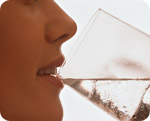
Whole Body Detoxification (Part 2): Fasting
Monday, March 10, 2008 by: Mary Laredo
Tags: fasting, health news, Natural News
- NULL AND VOID: Every document and executive order “signed” by Demented Joe Biden CONSTITUTIONALLY VOID due to use of AUTOPEN, including all PARDONS
- The gold at Fort Knox was stolen from Americans
- California's social media censorship law struck down: A victory for free speech or a threat to online safety?
- Trump’s FDA pick Makary vows to fight censorship, tackle toxic food additives
- BOMBSHELL: Government Whistleblower Exposes $347 Million Contract for Trafficking Unaccompanied Minors
- National Science Foundation under fire, as FOIA requests expose unconstitutional censorship ring
- Health Ranger Special Report: Protect yourself from vaccine shedders
- Deep State BOMBSHELL: Flynn names Nuland in Trump assassination plot, unveils Ukraine money laundering scandal
- Congratulations to the FULLY UNVACCINATED as you resisted the COVID-19 PROPAGANDA MACHINE fueled by over $100 BILLION
- EPA advisor admits the agency is funneling billions to climate groups ahead of Trump’s return to White House
- Florida takes a stand: DeSantis proposes permanent ban on mRNA vaccine mandates
- Modern science uncovers brain-boosting power of ancient spice coriander and its key compound linalool
- Ukraine's desperate war machine: Young men are ABDUCTED off the streets as Zelensky's regime forces conscription
- Peter Rost exposes Big Pharma corruption in his book “The Whistleblower: Confessions of a Healthcare Hitman”
- Trump disables U.S. missile systems in Ukraine, forces Zelensky to face reality of peace talks
- Jena Griswold “breaks” 2024 election in Colorado: Results will be 100% non-certifiable, warns Patrick Byrne
- Trump's impressive political comeback against all odds makes headlines around the world
- Michigan sheriff announces criminal investigation into 2020 election crimes, Dominion Voting Systems
- The Health Ranger releases “Vaccine Zombie” song and music video, using AI-animated zombies for the music video
- Congratulations to the FULLY UNVACCINATED as you resisted the COVID-19 PROPAGANDA MACHINE fueled by over $100 BILLION
- Sermon 30: How Jesus reveals Caesar’s FAKE CURRENCY and FALSE AUTHORITY
- Economic treason
- Modern science uncovers brain-boosting power of ancient spice coriander and its key compound linalool
- The pandemic as a tool for INDOCTRINATION: Understanding “The Indoctrinated Brain” by Dr. Michael Nehls
- Ballot drop boxes set ablaze in Oregon and Washington, prompting security concerns ahead of election
- Trump's impressive political comeback against all odds makes headlines around the world
- Arizona officials claim Maricopa County needs 10-13 days to tabulate results of the election
- Center for Countering Digital Hate launches BLACK OPS campaign against RFK Jr.
- Federal judge backs Trump's mass firings, clearing path for government downsizing
- Mint: The ancient herb that refreshes, soothes and heals
- Former horse rancher and 6,000 other plaintiffs are suing Syngenta after paraquat exposure led to Parkinson's Disease
- Coriander seeds: Ancient medicine backed by modern science
- Israeli soldiers accused of even more torture and abuse in the West Bank
- Michigan sheriff announces criminal investigation into 2020 election crimes, Dominion Voting Systems
- EPA advisor admits the agency is funneling billions to climate groups ahead of Trump’s return to White House
- Peter Rost exposes Big Pharma corruption in his book “The Whistleblower: Confessions of a Healthcare Hitman”
- EPA advisor admits the agency is funneling billions to climate groups ahead of Trump’s return to White House
- Global leaders unite to clamp down on “misinformation” with UN-backed Cascais Declaration
- RFK Jr. clears key hurdle: Sen. Susan Collins backs controversial HHS nominee, signaling a new era for health policy
- DIRTY VACCINES: Dr. Anthony "Fraudulent" Fauci, King of the Covid scamdemic, admits "We don't do placebo trials on vaccines"
- Democrats cry as “liberal supply chains” are wiped out and their favorite multi-billion dollar money machine is shut down
- Mint: The ancient herb that refreshes, soothes and heals
- PBS shutters DEI office in wake of Trump’s executive order
- South Korean banks halt silver bar sales amid global and domestic uncertainty
- “Cancer Gag Act” threatens farmers’ rights and public health: A dangerous push for corporate immunity
- James V. DeLong’s book “Out of Bounds, Out of Control” provides a gripping tale of how the EPA operates outside the rule of law
- Fake "CLIMATE CHANGE" will continue to devastate any regions the globalists and ruling elite want to purchase at a discounted price
- Trump's impressive political comeback against all odds makes headlines around the world
- A bold step forward: $900M slashed from Federal Education Research Office signals a return to local control
- Kyiv plans to recruit 160K soldiers amid mounting cases of DESERTION in Ukrainian military
- Yes, the president can deploy troops to enforce immigration law
- Congratulations to the FULLY UNVACCINATED as you resisted the COVID-19 PROPAGANDA MACHINE fueled by over $100 BILLION
- Studies strongly suggest taurine supplementation can promote longevity
- This DNC clip shows why Democrats will keep losing...
- Red Cross issues warning to stop blood plasma donations from vaccinated people
- Scientists confirm: GENIUS brain function can be spontaneously unleashed in humans without any apparent cause
- HYSSOP: What research reveals about the health benefits of this ancient holy herb
- Two containers with completed ballots fall out of truck in Florida
- EPA advisor admits the agency is funneling billions to climate groups ahead of Trump’s return to White House
- DATA: England’s vaccinated population had close to one million deaths in 23 months; unvaccinated population had less than 61,000 deaths over the same period
- Fully vaccinated about to see “tsunami” of illness and death, warns virologist
- Today I asked our AI language model “Neo” about which phytonutrients or phytochemicals can block the spike protein related to SARS-CoV-2 … Here is what it answered…
- Global leaders unite to clamp down on “misinformation” with UN-backed Cascais Declaration
- We are building the infrastructure of human freedom… Brighteon.AI is the next launch that will put life-altering LLM technology into your hands for free
- BREAKING: 2025 NDAA authorizes mandatory military draft of WOMEN across America… as Pentagon pursues global NUCLEAR war with both Russia and China at the same time
- ENGINEERED FAMINE: Oregon starts SHUTTING DOWN small farms “to protect the people”
- Michael Yon warns of a ZIONIST TAKEOVER in Trump’s second administration
- Ozempic and Wegovy weight loss drugs are injectable LIZARD VENOM PEPTIDES that may unleash a devastating wave of organ failure… side effects align with symptoms of SNAKE BITES
- NASA admits that climate change occurs because of changes in Earth’s solar orbit, and NOT because of SUVs and fossil fuels
- These 13 countries just signed an agreement to engineer a global FAMINE by destroying food supply
- BOMBSHELL: DNA testing kits are a SCAM to develop ethnic-specific bioweapons
- Careless Whisper: AI-powered transcription tool being used by hospitals found to invent chunks of text no one ever said
Periodic fasting of one to ten days (or longer for experienced fasters) is a time-tested practice that furthers cleansing of the day-to-day pollutants from food and the environment, and also releases deeply held toxins that have been stored within bodily tissues for years or decades. It's an invaluable means of augmenting the cleansing initiated by other methods such as exercise and an alkaline diet.
All animals have a natural instinct that tells them when to fast for the purpose of healing, yet we humans – consumed by our hectic, demanding lives of quick fixes and fast foods - have become exceedingly detached from our own innate wisdom. The very practice of fasting can help sharpen our awareness and reconnect us with our instinctive nature.
There are several types of liquid and modified "fasts", with the water-only fast being the oldest, most natural means of cleansing the body. It is also the strictest and most difficult to follow; however, the internal cleanliness brought on by regular water fasts contributes to healthy aging as it continuously removes toxins from organs, tissues and the bloodstream, and helps prevent further toxic build-up.
Other liquid fasts include organic, raw juices, and the Master Cleanser – also known as the Lemonade Fast – which consists of water, fresh squeezed lemon juice, maple syrup and cayenne pepper. These fasts provide nourishment while cleansing the body and are much easier to follow. They do not however provide the degree of rest for bodily systems as a water-only fast.
It is generally recommended that those with illnesses such as cancer refrain from fasting; however, once the condition is stable and an alkalinizing diet is maintained (and no toxic treatments are prescribed) the practice of fasting may speed the healing process. In fact, this author began regular cleansing fasts - of each method described here - when cancer became stabilized, and continues to experience dramatic healing with no adverse side effects. It's best to proceed with caution, perhaps beginning with a supervised fast or with weekly raw food cleanses, to gauge the body's response.
Possible Reactions
Before embarking on a fast, one should be aware of possible unpleasant reactions. The first reaction would be hunger, as it takes the body three days to lose an appetite for food while fasting. More rest is sometimes necessary as energy levels may initially drop.
Other typical reactions include headaches and a white coating on the tongue as stored toxins are dislodged from organs and tissues. Depending on the individual's level of toxicity, blemishes, bad breath or body odor may be experienced as toxins are released through the skin.
These are all temporary responses that are followed by a feeling of well-being, clarity, emotional and physical balance - and occasionally euphoria - depending on the amount of cleansing accomplished. The lasting benefits of fasting significantly offset the fleeting unpleasantries.
During a fast, toxins will be flushed out of the body, primarily through the kidneys, lungs and skin. Bowel movements will be few or will stop completely as the body rests and rejuvenates itself. A colonic, enema or mild herbal laxative tea such as Smooth Move may be taken to aid the elimination process and to keep toxic residue from being reabsorbed into the body.
An inexperienced faster should be aware that long fasts sometimes release a toxic overload that is difficult to process and should therefore be supervised to make sure the kidneys are not overburdened.
Preparing for a Fast
Individuals who are not already consuming a plant-based diet of unprocessed whole foods should transition to this type of cleansing diet for several days or more before beginning any type of fast, to ease into the detoxification process and stimulate elimination. This would include raw or lightly steamed vegetables, fruits, sprouts, fresh organic juices, very little fat from nuts, seeds and avocados, and minimal amounts of olive or flax oil.
The Juice Fast
A juice fast provides concentrated nutrients that are easily and immediately assimilated by the body. It's much easier to sustain a long juice fast as it provides instant energy to the body and has fewer of the unpleasant side effects as a water-only fast; however, it takes longer to experience the same benefits of the stricter fast.
To optimize the benefits of a juice fast it's best to choose vegetables and fruits that have the most powerful cleansing abilities. These include cabbage and all cruciferous vegetables, dandelion greens, sprouts, celery, carrots, lemons, apples and beets (2).
The Master Cleanser
Stanley Burroughs was the originator of the Master Cleanse diet in 1940 and developed it as both a cleanser and body builder, and to help others heal from illnesses including stomach ulcers and infections. It's also effective as a reducing diet.
One serving is made with 2 tablespoons of fresh organic lemon or lime juice, 2 tablespoons of grade B maple syrup (a dark grade with a high mineral content), and 1/10th teaspoon of cayenne pepper (to break up mucus) added to ten ounces of water. These three ingredients provide enough vitamins, minerals and calories to stave off hunger pangs for most fasters.
Although Burroughs claimed that the cleanse would facilitate healing of virtually all diseases, it may not be appropriate for individuals with candida, diabetes, or cancer – unless the latter condition is stabilized - because of its sugar content. Consult with a naturopath to determine if this cleanse is suitable for these illnesses.
Burroughs recommended consuming up to twelve glasses a day during the cleanse. He further suggested a fast of ten to forty days for physical and spiritual healing; however, this author has experienced weekly and monthly fasts of one to three days respectively to be extremely effective.
Elimination is uninterrupted on the Master Cleanser with the use of herbal laxative teas and/or a salt water drink to augment the cleansing action. The latter is made with two level teaspoons of sea salt added to one quart of lukewarm water, and consumed upon arising on each morning of the fast (3).
The Water Fast
In his book The Miracle of Fasting, health pioneer Paul Bragg – who spent decades supervising and practicing routine water fasting - outlines an incremental procedure for following water-only fasts. He suggests beginning with a twenty-four hour weekly fast of eight to ten glasses or more of pure water. Once this has been done successfully, the next fast can be extended to thirty-six hours. Short fasts of up to three days may be done monthly, after which time a longer fast of four to ten days, spaced at four-month intervals, may be implemented.
Bragg further advised that water fasts lasting longer than four days should not be attempted until after a successful six-month period of several shorter fasts along with a cleansing diet between
fasts (1). The effects of fasting are cumulative and the more often one fasts, the more cleansed the body becomes and the easier it is to extend the duration.
Bragg and many of his students went on long fasts of seven to ten days or longer, up to four times per year to achieve profound physical, mental and spiritual cleansing. This degree of internal cleanliness was maintained with regular short fasts throughout the year.
Modified "Fasts"
In addition to liquid fasting, a modified "fast", or cleansing diet will also purify the body while providing nourishment. This diet includes solid foods in the form of raw fruits and vegetables, in addition to water and fresh juices. It may also include smoothies made of a wide variety of fruits, greens and other vegetables, fresh juice or water only. No fat of any kind is consumed on this cleansing diet.
Breaking a Fast
Properly breaking a fast is a vitally important consideration. Many bodily systems, especially digestion, have rested and need time to become accustomed to food again. It's imperative to gradually reintroduce food so as not to overburden the body after its period of rest and healing. Metabolism slows during a fast and requires time to re-adjust. This is achieved by carefully adding small amounts of easily-digested foods on the days following a fast.
Much of the body's toxins are stored in fat tissue. During a fast, toxic fats are released and eliminated; however, if too much food is reintroduced too quickly, the body will easily regain more than the lost fat. A good practice is to consume raw fruits and at least 64 ounces of filtered water on the first day following a fast.
Fruits and vegetables, raw or lightly steamed may be eaten on the second day. By the third day the pre-fast diet may be resumed. Generally, the longer the fast, the longer it should take to return to the normal diet. It's also important to chew thoroughly and avoid overeating.
Who Should Not Fast
Fasting is not for everyone. Those who are unwilling or unable to eliminate caffeine, alcohol, carbonated beverages, cigarettes, or drugs of any type should not consider fasting. Pregnant or nursing women; children under eighteen years of age; and individuals with heart diseases, mental illness, or anyone in a debilitated or malnourished state should refrain from fasting (2). A health care provider should be consulted to clear up any question of whether or not one should begin a fast of any duration.
More energy comes from a purified body and fasting of all types contribute to health maintenance, mental clarity, and spiritual cleansing as it eases the daily burden of bodily processes, allowing rest and cellular healing to occur.
Graceful aging and reclaiming robust health in a toxic, contaminated world is possible when we give the body proper nourishment, exercise, and adequate opportunities to rest, purify and heal itself. The routine practice of fasting, and regular exercise such as rebounding, are but two strategies to achieve this goal. Part 3 of this series will look at the benefits of infrared sauna use for whole-body detoxification.
References:
1. Bragg, Paul & Bragg, P.: The Miracle of Fasting, 49th Edition. Santa Barbara, CA: Health Science, 68-74
2. Colbert, MD, D.: Toxic Relief. Restore Health and Energy Through Fasting and Detoxification. Lake Mary, FL: Siloam Publishing, 85-6; 164-6, 2001
3. Burroughs, S.: The Master Cleanser. Revised Edition, copyright 1993 by A. Burroughs, pgs. 11-21
About the author
Mary Laredo is an artist, educator and gallery curator who lives and works in Detroit, MI. As a breast cancer survivor who shunned conventional treatment, she is writing a book about her experience with natural therapies and nutritional healing. Visit http://marylaredo.blogspot.comFasting at FETCH.news
Get independent news alerts on natural cures, food lab tests, cannabis medicine, science, robotics, drones, privacy and more.
Take Action: Support Natural News by linking to this article from your website
Permalink to this article:
Embed article link: (copy HTML code below):
Reprinting this article:
Non-commercial use OK, cite NaturalNews.com with clickable link.
Follow Natural News on Facebook, Twitter, Google Plus, and Pinterest
Science News & Studies
Medicine News and Information
Food News & Studies
Health News & Studies
Herbs News & Information
Pollution News & Studies
Cancer News & Studies
Climate News & Studies
Survival News & Information
Gear News & Information
News covering technology, stocks, hackers, and more



"Big Tech and mainstream media are constantly trying to silence the independent voices that dare to bring you the truth about toxic food ingredients, dangerous medications and the failed, fraudulent science of the profit-driven medical establishment.
Email is one of the best ways to make sure you stay informed, without the censorship of the tech giants (Google, Apple, Facebook, Twitter, YouTube, etc.). Stay informed and you'll even likely learn information that may help save your own life."
–The Health Ranger, Mike Adams












































